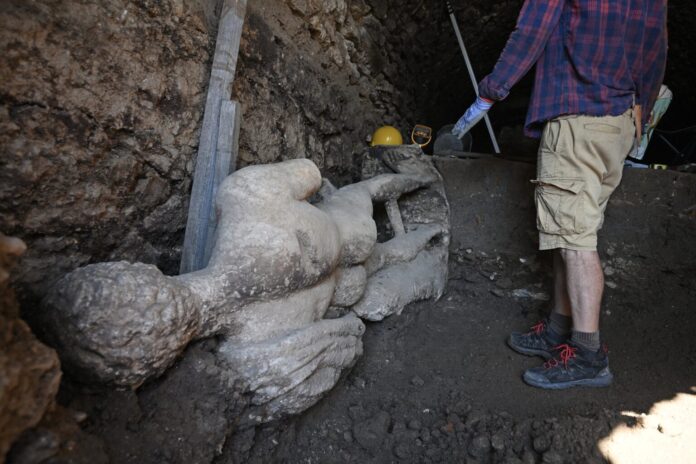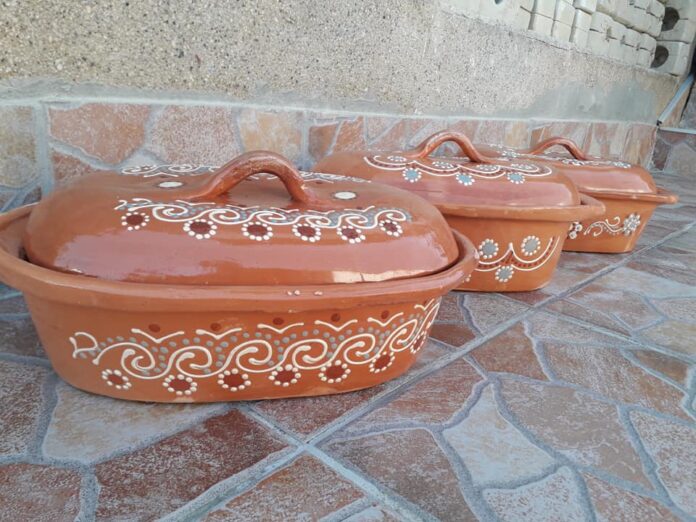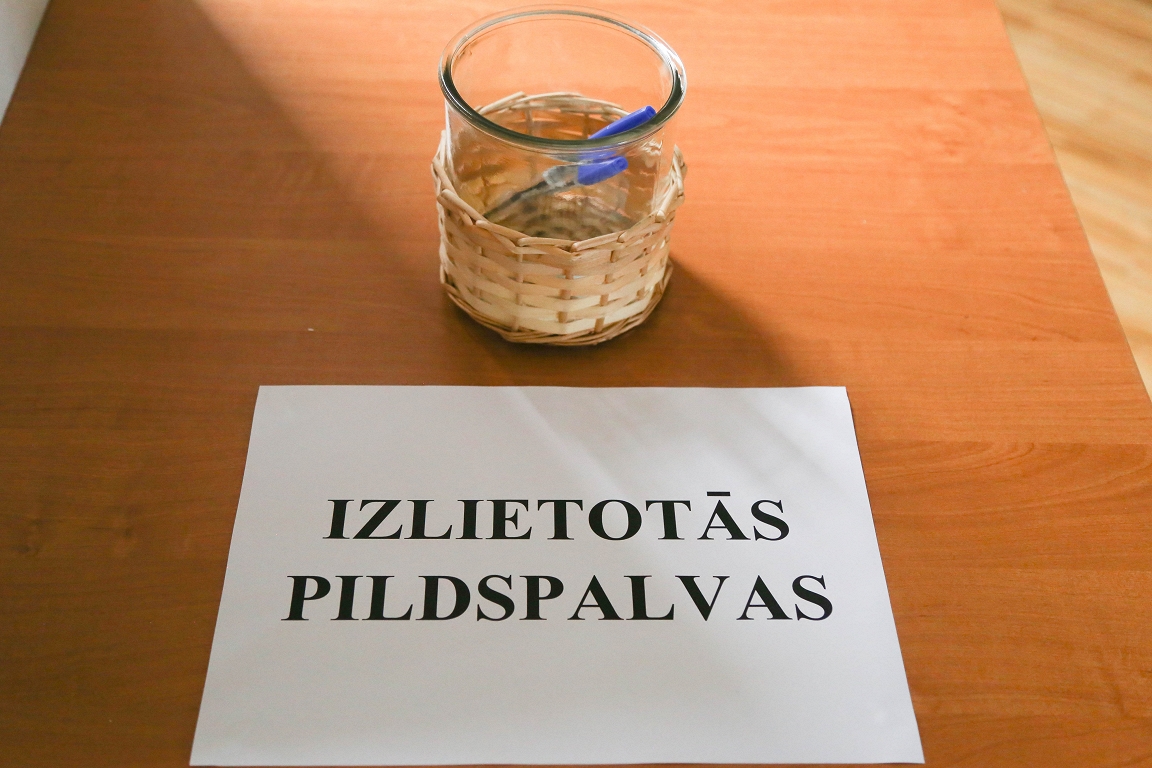The forgotten ancient Macedonian city of Heraclea Syntica

In 168 BC in Heraclea Cynthica the last Macedonian King Perseus, son of Philip Fifth, killed his brother. In the war with the Roman state, the Sinti stood on the side of Perseus and zealously fought against the Romans. But in the battle of Pidna, the Romans won and won Macedonia. The Macedonian kingdom was then divided into four vassal states, and Syntica belonged to the first along with Amphipolis as its capital. Later, after the battle of Philippi in the 42nd year BC, Heraclea, the old capital Cynthica, was declared a « free city » according to Titus Livius’ statement
Heraclea Syntica is an ancient Macedonian city, located in the southwestern foot of Kozuv hill, near the middle course of the Struma River, and east of today’s village of Shirbanovo (today Rupi) in Petrich, Republic of Bulgaria. It gets its name from Herakla, a mythical ancestor of the Macedonian Argeady dynasty, and the epithet indicates that the city is in the territory of the Macedonian (Paionian) tribe Cynthi. From a historical, geographical, cultural and ethnic point of view, Heraclea Syntika is a city in Macedonia, more precisely in Upper Macedonia. In Upper Macedonia, which was also named as free Macedonia, several areas, including Paionia and Syntika, entered. The city is mentioned in the works of Titus Livius, Diodorus, Strabon, Pliny Elder, etc., and due to the lack of archaeological findings, its location has been a mystery for many years.
The location of the city of Heraclea Syntica has long been a mystery
The location of the ancient city of Heraclea Sintica for a long time in historical science was a mystery, scientists based on old records and testimonies knew about its existence in antiquity, but due to lack of archaeological findings they could not accurately locate it. For a long time, scientific discussions were conducted on the location of the city, and from a scientific and research point of view it was first mentioned in « Pirin » (1930-1931), when it was identified with the city of Petra. This thesis was supported by Dimitar Dechev and Atanas Milcev, who first organized research in 1958. On the other hand, certain scientists disagreed with this claim and believed it was another city, or orthopolis or Tristolos. The mystery of the location of the city was resolved in 2002 by Georgi Mitrev, who found a marble stella dating 308 of our era with an inscription in Latin, an inscription that confirmed that it was about the city of Heraclea Sintica. Shortly thereafter, another inscription was found by Mitrev, which finally confirmed that the archaeological site was actually the city of Heraclea Syntika and located in the southwestern foot of Kozuv hill, near the middle of the Struma River and east of today’s village.
In recent years, the interest of Bulgarian science has increased for the city of Heraclea Syntica, and attempts to preserve the material, visual and functional authenticity of the archaeological site, such as 3D-laser scans or models and copies of ancient elements, etc. From an archaeological point of view, the city of Heraclea Sintica has been researched for more than two decades by Ludmil Vagalinski, and part of the city wall and the city’s acropolis, as well as two marble statues that have sparked excitement in Bulgarian society.
Both sculptures were discovered in archaeological excavations at a different period. The first sculpture found is in the Petrich Museum and originates around the beginning of the new era, and the second statue was created about 170 years later. Studies have shown that modeling of statues is different, and the second statue from a stylish aspect responses to those characteristic of the Roman province of Macedonia of the second century of our era.
Contradictions in sources
The ancient city of Heraclea Syntika is mentioned in the works of Titus Livius, Diodorus, Strabo, Pliny the Elder and Claudius Ptolemy, and is also witnessed in several inscriptions by Pretori soldiers, or Roman citizens. Due to the contradictions in the sources, science was led to the geographical and ethnicity of Heraclea Syntica in antiquity.
The information stored in the « natural » of Pliny the older mentions the Rhodopa, Jopius and Orbel Mountains, with the inhabitants of Aretusa, Antioch, Idomene, Dober, Astrayon, Alanta, Audarist, Moril, Moril, Garci, Linki, Audari, Audarist, Morili, Moril, Xylopol, the Free Scorpio, and Heraclea Syntica, Timfaya and Torona.
Titus Livius mentions the city of Cynthia, but claims to be a « Dardanian city near the border with Macedonia », which fell into the hands of Macedonian King Philip Fifth in 212 years. Titus Livius does not establish any connection between Cynthia and Heraclea Syntica. But given the other sources, it can be concluded that Titus Livius was referring to Heraclea Syntica, because Stephen’s Byzantine mentions City of Cynthia, which is not in Dardania, but in Macedonia, near the Thrace border.
According to prof. Dr. Vojislav Sarakinski, the contradictions arise from the fact that the authors of Roman times neither had immediate insights and experience of this field nor geographical terms such as Paionia, even Macedonia and Thrace, in their time had the same weight and the same political meaning as in Herodotus.
« The immediate insight into the things of each subsequent source became getting weaker, and the data was transmitted mechanically, until they stopped being accurate, » Sarakinski said.
Center of Syntica – Territory of the Macedonian Tribe Sinti
According to Janula Papazoglu (Macedonian and Yugoslav classicist, epigraphic and academic worker), who has been expert in ancient history in the Balkans for many years, given the name of the city of Heraclea Cintika, then he was founded or strengthened by a member of the Macedonian dynasty. However, the city was not founded in Thrace, but on the territory of the Paionian (Macedonian) tribe of Sinti, who lived on the right bank along the middle stream of the Struma River (in antiquity strimon) on both sides of the rupee raven, as well as the countries along the Strumica River.
Based on Tucidite’s writings, some of the scientists named the Sincti as a Thracian tribe, but Tuciditis writes in their work from a broader geographical point of view, not ethnic, as it has been mentioned several times in the past. Dr. Nade Proeva. Some historians also argue that it is Pelasgi, in close relatives with the indigenous population of Samatrakia, and Homer described them with the adjective agriophones, ie wildlife.
From a cultural, ethnic and geographical point of view, the city of Heraclea Syntica was located in Upper Macedonia. Starting with Herodotus, the ancient authors of Primorsky Macedonia was called – Lower Macedonia, and the mountain inner part – Upper Macedonia. Ancient authors always wrote and spoke only about Lower and Upper Macedonia. The following areas included: Timfaya, Paravaya, Dasaretida, Orestida, Lyncestida, Pelagonija, Deriop, Paionia, Parorbelia, Cynthica and Odomantika entered the Upper Macedonia, which was also named free Macedonia.
According to Nade Proeva, Syntika stretched down the middle of the Strimon River, north of Bisaltia, and more important cities were Heraclea, Porochopol, Tristol and Nein. Of these cities, the most important was Heraclea Syntica, and according to some other views the city was not built by Philip II, but by the Macedonian King Aminta III and named in honor of the mythical hero Heracle, mythical birth mayor. It is believed that Amyntas has established the city with strongly insurmountable ramparts, whose remains can be seen today. At the time of the Macedonian antigonid dynasty, the city became the seat of the Syntika province and the Diocese of Paionia, which is known by Titus Livy.
In 168 BC in Heraclea Cynthica the last Macedonian King Perseus, son of Philip Fifth, killed his brother, Crown Prince Demetrius. This brotherhood was due to personal rivalry, as well as the proporimous affection of Demetrius, who was raised in Rome as a child. With the death of Demetrius, the Romans received the occasion for declaring war against the Macedonians, which began immediately.
The Sinti stood on the side of Perseus and zealously fought against the Romans. However, in the battle of Pidna, the Romans won and won Macedonia. The Macedonian kingdom was then divided into four vassal states, and Syntica belonged to the first along with Amphipolis as its capital. Later, after the battle of Philippi in the 42nd year BC, Heraclea, the old capital Cynthika, was declared a « free city » according to Titus Livy’s statement.
The city still existed in the 10th century, when it was last mentioned by the geographer Jerokles and the Byzantine Emperor Constantine Seventh Porphyrogenite. D.








